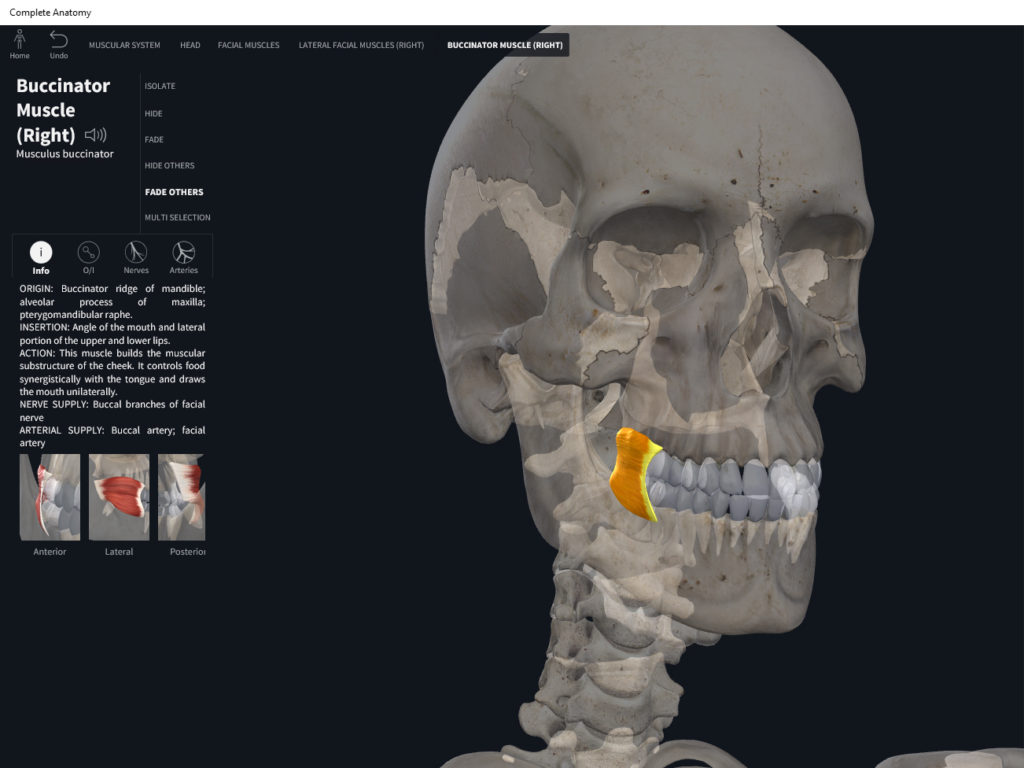Anatomy & Physiology: Muscles—Buccinator.
Structure.
- Origin: alveolar process of maxilla and mandible; pterygomandibular raphe.
- Insertion: orbicularis oris.
- Deep to masseter and orbicularis oris.
Function.
- Concentric action: press cheeks against teeth and lips (whistling, glowing, sucking); draws corners of mouth laterally; aids chewing.
- Eccentric action:
- Isometric action:
- Innervation: facial VII nerve.
- Arterial supply: maxillary and facial arteries.
- “Buccinator the whistling sucking chew-inator”.
Clinical Significance.
More.
- http://anatomyzone.com/tutorials/musculoskeletal/muscles-of-facial-expression/
- https://www.anatomynext.com/buccinator/
Images used with permission by 3D4Medical.

References
Biel, A. (2015). Trail guide to the body: A hands-on guide to locating muscles, bones and more.
Clark, M., Lucett, S., Sutton, B. G., & National Academy of Sports Medicine. (2014). NASM essentials of corrective exercise training. Burlington, MA: Jones & Bartlett Learning.
Jenkins, G., & Tortora, G. J. (2012). Anatomy and Physiology: From Science to Life, 3rd Edition International Stu. John Wiley & Sons.
Muscolino, J. E. (2017). The muscular system manual: The skeletal muscles of the human body.
